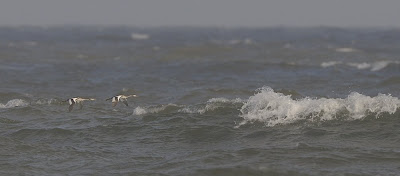 My dad and i set off for Norfolk first thing and went straight to West Runton to try and connect with the Blyths reed warbler, but after some time and no sign we decided to move along and try for the Lesser grey shrike. After a bit of a slog from the car we located the shrikes whereabouts and although a bit distant for my camera at first it started to show closer.
My dad and i set off for Norfolk first thing and went straight to West Runton to try and connect with the Blyths reed warbler, but after some time and no sign we decided to move along and try for the Lesser grey shrike. After a bit of a slog from the car we located the shrikes whereabouts and although a bit distant for my camera at first it started to show closer.
 It certainly fed well and was very active catching insects and returning to the same bushes. The pink flush on the breast could be seen well, this was a first for my dad and only the second for me, and certainly closer than the acle bird some years ago.
It certainly fed well and was very active catching insects and returning to the same bushes. The pink flush on the breast could be seen well, this was a first for my dad and only the second for me, and certainly closer than the acle bird some years ago.
 It stayed loyal to a set of bushes then flew towards the coastal path and gave even closer views to everyone there. It certainly was a cracking bird and perfect compensation for not seeing the blyths.
It stayed loyal to a set of bushes then flew towards the coastal path and gave even closer views to everyone there. It certainly was a cracking bird and perfect compensation for not seeing the blyths.
















































